The hawk is free now, so hopefully this information will be useful to someone dealing with a similar situation in the future.
A juvenile Cooper’s Hawk was inadvertently trapped inside The Arcade last week. Nobody saw it enter, but it’s assumed to have chased a pigeon through an open door on an upper level, and found some nice perches up high along the ceiling of the indoor mall. It was there when staff arrived in the morning. They called me and I went over with my rescue net, but it was way too high to reach. The net isn’t used for catching a healthy hawk in flight – it’s only for trapping animals that are injured and nearly immobile.
I spoke to a few experts and we agreed that, unfortunately, the building staff might have to wait until the hawk was hungry and weak enough to come down and be caught, and then taken to the Wildlife Clinic for some food and fluids. I left my net and carrier with the staff.
From arcadeprovidence.com:
Here’s a photo from their website that shows just how long and open it is – plenty of empty space for a hawk to fly around…
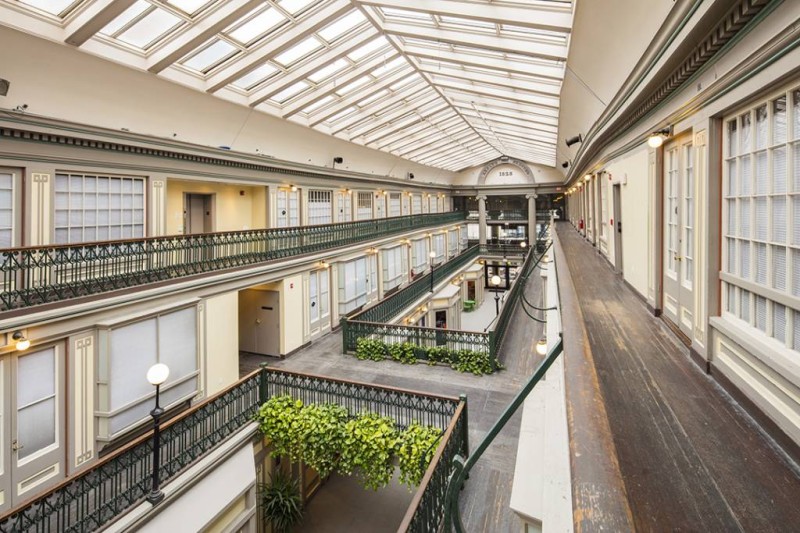
…and many places for a hawk to perch:
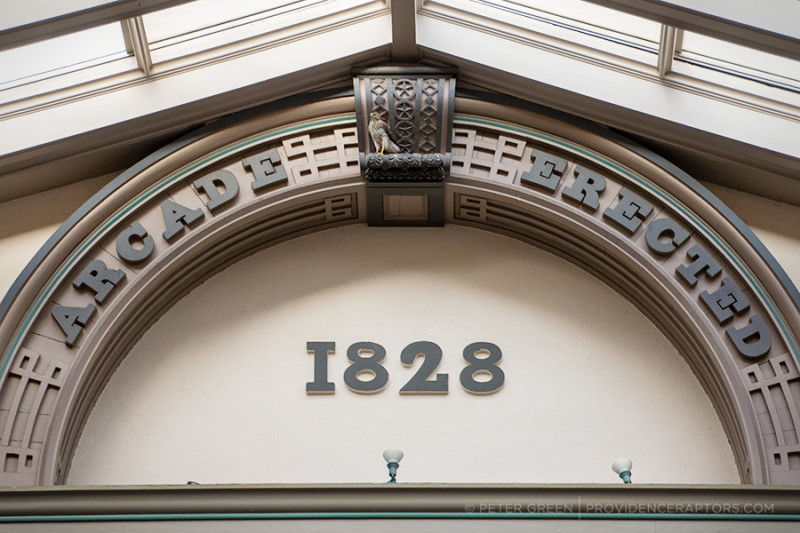
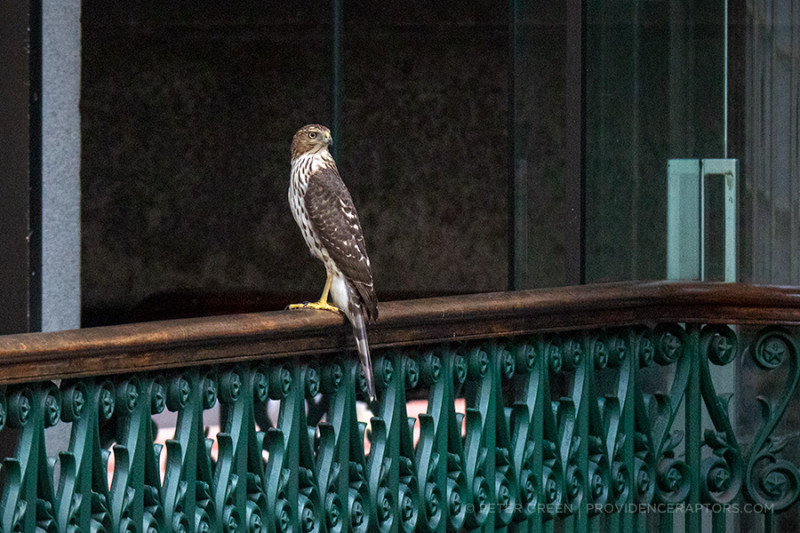
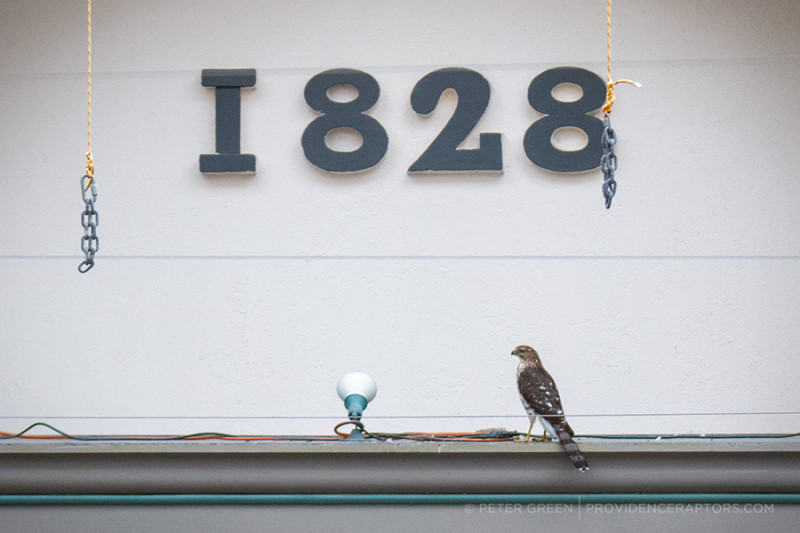
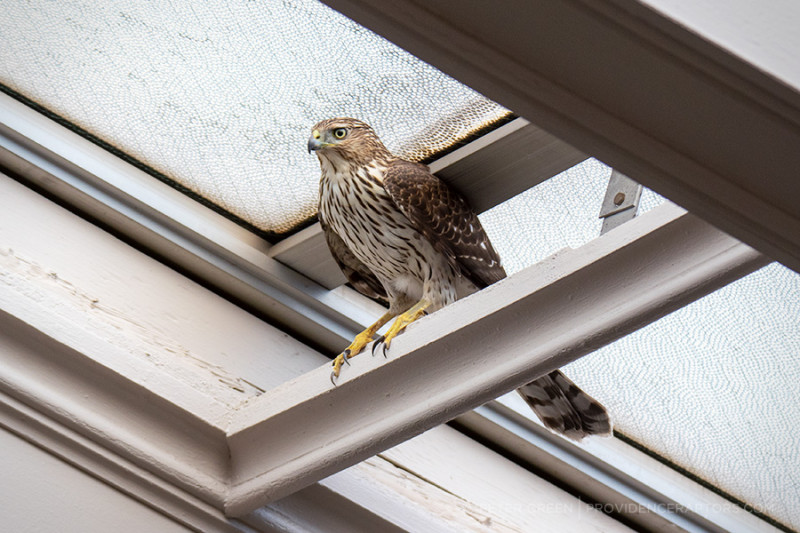
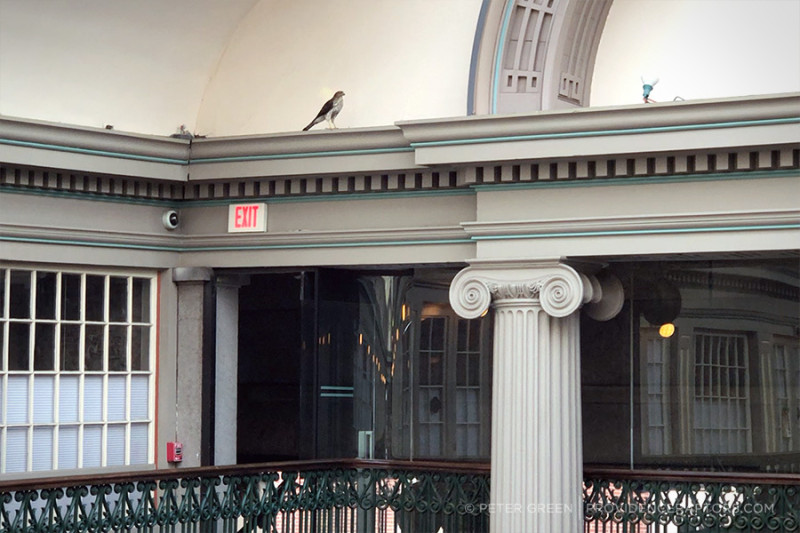
Here’s video of the hawk flying the full length of The Arcade:
Back home, I looked through “Urban Raptors: Ecology and Conservation of Birds of Prey in Cities“, remembering a chapter about rescue and rehabilitation. I sent the staff the information below for some more ideas.
In the evening they turned down the lights, covered all the windows, and illuminated the exit door. The next morning the hawk was gone. Just as nobody saw it enter, nobody saw it leave – Cooper’s Hawks are notoriously stealthy.
Please feel free to save and share this information, and also buy a copy of “Urban Raptors: Ecology and Conservation of Birds of Prey in Cities“:
To create prey activity in the opening, workers scattered bird seed in the doorway and immediately outside it. Once the doorway was baited, human traffic through that door was minimized. For a diurnal raptor that hunts birds, the sparrows feeding on birdseed in the doorway often proved irresistible, and the first dive carried the raptor out through the door. Once the bird was out, managers cleaned up the seed to reduce the chance of accidental reentry. If the trapped raptor was nocturnal or typically pursued small mammals, biologists recommended waiting until evening to make the conditions most conducive for the bird to leave. In these cases, workers baited the doorway and minimized human traffic as before but also dimmed or turned off the lights in the warehouse and turned on the lights around the nearest retractable door within view of the raptor. The combination of lighting accentuating the door and possible small mammals feeding on the bird seed most often resulted in the raptor flying through that doorway to freedom.
If, however, the bird did not exit, a “bait mouse” was sometimes used. Facility staff set up conditions as before and placed a bait mouse (“feeder” mouse purchased from a pet store) in a small, clear container in the doorway. The trapped raptor was attracted to the bait mouse in the doorway, dove at it, and continued out through the door.
This all reminded me of reports of a Cooper’s Hawk trapped inside the Library of Congress in 2011.
It also reminded me of a story I often tell during my presentations about urban raptors… I once received an email from an employee at a large department store. He said a Cooper’s Hawk decided to live inside their store and they gave it a name and were very happy to see it every day. About a week later, the hawk was found dead and the heartbroken staff wondered why…? Without more information, my best guess was the hawk sadly starved to death. Without a food source or means of escape, it slowly perished.
So, if you’re in a similar situation, please try and get the hawk free – don’t panic, it won’t starve in a day or two, but please help get it free as soon as possible.
UPDATE: This may be the same individual Cooper’s Hawk that was trapped in The Arcade – It’s great to see it free!
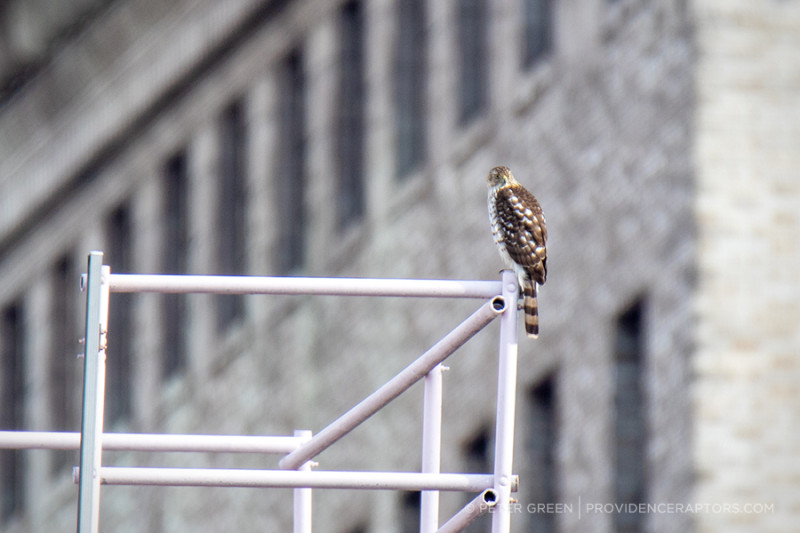

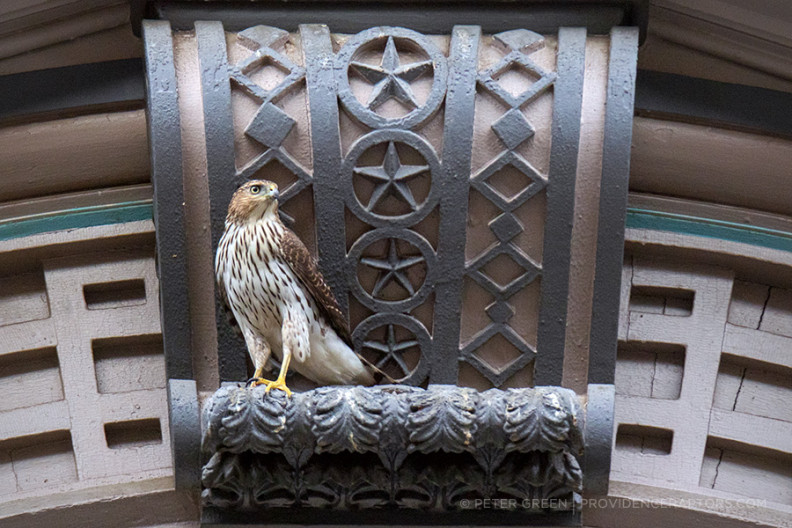
3 Comments
Great photos and great story with a happy ending. Bird looks incredibly handsome in that setting. Nice to have it pay a visit with no apparent ill-effects on anybody. I use the same trick to get bees out of my apartment at night — open windows, turn off lights, except the porch light, One time I had a small bat in the apartment (where I live, in Italy, the bats are never rabid) and when I called the police, they told me to do the same. Glad it all worked out. Ciao!
Oooh! I just had one of these perched outside of my living room, right by Swan Point Cemetery. I identified it through your photographs – thanks so much! What a spectacular bird.
Great to hear, thanks :)